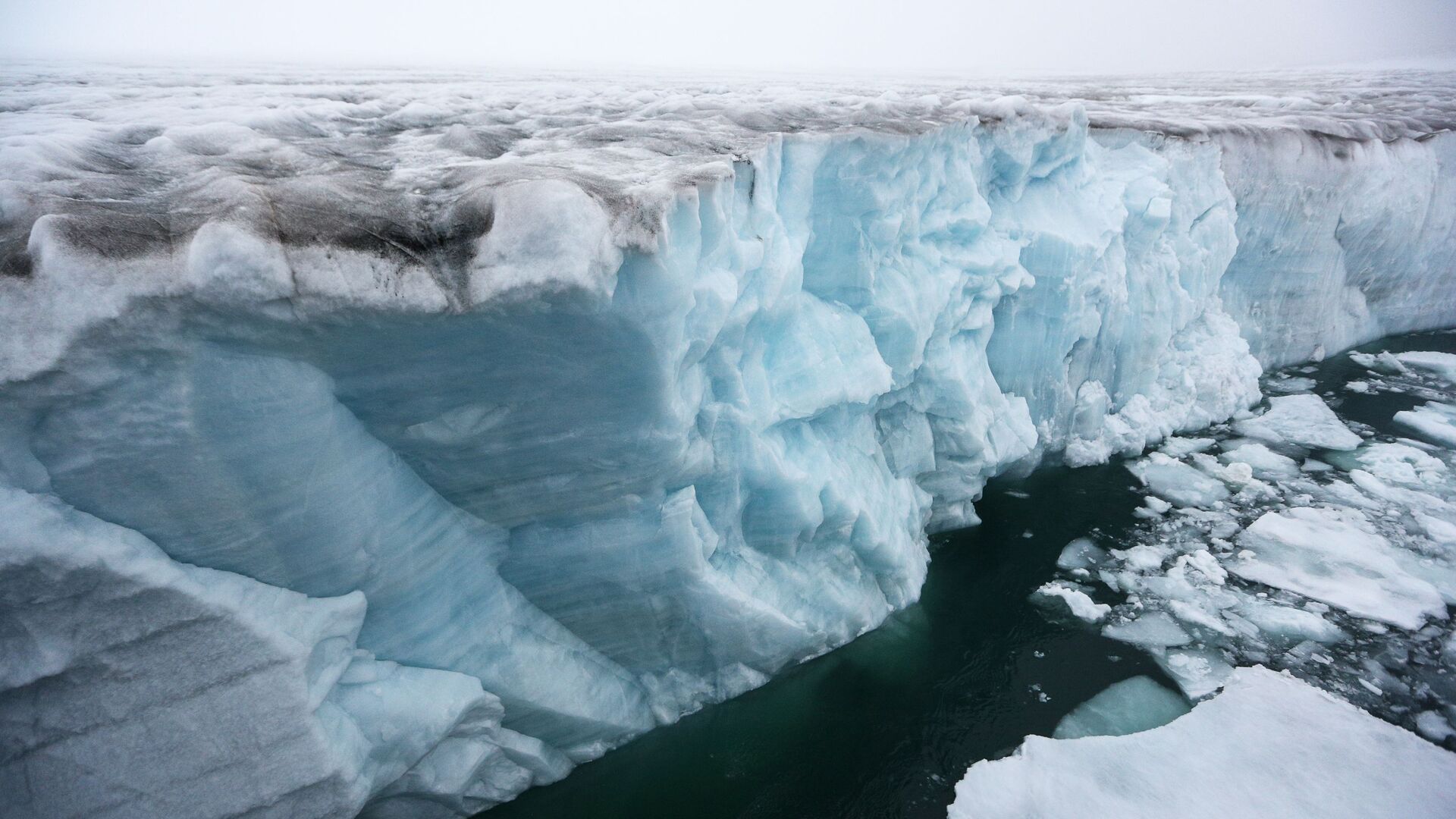https://en.sputniknews.africa/20230714/not-only-metals-scientists-find-traces-of-ancient-glaciers-under-south-africas-gold-fields-1060517325.html
Not Only Metals: Scientists Find Traces of Ancient Glaciers Under South Africa's Gold Fields
Not Only Metals: Scientists Find Traces of Ancient Glaciers Under South Africa's Gold Fields
Sputnik Africa
Glaciers are traditionally associated with the North and South Poles. It sounds impossible that they could be found in South Africa. However, scientists from... 14.07.2023, Sputnik Africa
2023-07-14T08:44+0200
2023-07-14T08:44+0200
2023-07-14T08:44+0200
sub-saharan africa
south africa
science
discovery
ice
glaciers
south pole
https://cdn1.img.sputniknews.africa/img/07e7/07/0d/1060516895_0:160:3073:1888_1920x0_80_0_0_23cf2724f950653ab90e41acb0ca042c.jpg
Traces of a glacier have been discovered beneath the world's largest gold deposits in South Africa. The finding dates from 2.9 billion years ago, making it the oldest glacier on Earth, as stated in the study conducted by Axel Hofmann (University of Johannesburg, South Africa) and Ilya Bindeman (University of Oregon, US).According to the research paper published in the journal Geochemical Perspectives Letters, the mentioned glacier provides yet further evidence of major climate shifts on Earth in the past, according to the scientists. In addition to glacial moraines (glacial deposits created by the glacier), the reliability of the discovery is confirmed by geochemical studies, as Ilya Bindeman said.Professor Hofmann also explained possible circumstances that facilitated the formation of the glacier.An assumption has also been made about the impact of the glacier on the influence of the glacier on the formation of the precious metal.The method of triple isotope analysis could contribute to the discovery of traces of ancient glaciers, which consequently would stimulate the study of the Earth's historical climate, the scientists believe.
south africa
Sputnik Africa
feedback@sputniknews.com
+74956456601
MIA „Rossiya Segodnya“
2023
Rasina Musallimova
https://cdn1.img.sputniknews.africa/img/07e7/0a/17/1063019139_0:0:646:646_100x100_80_0_0_348c74b69cf86748a53875f8148a2f85.jpg
Rasina Musallimova
https://cdn1.img.sputniknews.africa/img/07e7/0a/17/1063019139_0:0:646:646_100x100_80_0_0_348c74b69cf86748a53875f8148a2f85.jpg
News
en_EN
Sputnik Africa
feedback@sputniknews.com
+74956456601
MIA „Rossiya Segodnya“
Sputnik Africa
feedback@sputniknews.com
+74956456601
MIA „Rossiya Segodnya“
Rasina Musallimova
https://cdn1.img.sputniknews.africa/img/07e7/0a/17/1063019139_0:0:646:646_100x100_80_0_0_348c74b69cf86748a53875f8148a2f85.jpg
south africa, science, discovery, ice, glaciers, south pole
south africa, science, discovery, ice, glaciers, south pole
Not Only Metals: Scientists Find Traces of Ancient Glaciers Under South Africa's Gold Fields
Glaciers are traditionally associated with the North and South Poles. It sounds impossible that they could be found in South Africa. However, scientists from South Africa and the US has recently refuted this misconception.
Traces of a glacier have been discovered beneath the world's largest
gold deposits in South Africa. The finding dates from 2.9 billion years ago, making it the oldest glacier on Earth, as stated in the study conducted by Axel Hofmann (University of Johannesburg, South Africa) and Ilya Bindeman (University of Oregon, US).
According to the
research paper published in the journal
Geochemical Perspectives Letters, the mentioned glacier provides yet further evidence of major climate shifts on Earth in the past, according to the scientists.
In addition to glacial moraines (glacial deposits created by the glacier), the reliability of the
discovery is confirmed by geochemical studies, as Ilya Bindeman said.
"We looked at relative amounts of three oxygen isotopes, 16O, 17O, and 18O. These are all types of oxygen, but have very slightly different weights. We found that these rocks had very low amounts of 18O, and very high amounts of 17O, indicating that they were formed at icy temperatures. This means ice. Couple that geochemical evidence with the moraine evidence, and it means glaciers, the oldest glaciers yet found on Earth,” the researcher revealed.
Professor Hofmann also explained possible circumstances that facilitated the formation of the glacier.
“It may be that this area was close to the poles. Another possibility is that the whole Earth was in a ‘snowball Earth’ period, when low atmospheric concentrations of CO2 and CH4 led to a ‘reverse greenhouse effect’, causing much of the planet to freeze,” the co-author said.
An assumption has also been made about the impact of the glacier on the influence of the glacier on the formation of the precious metal.
“It’s possible that a change from icehouse to greenhouse conditions may have aided in the formation of those gold deposits, but this needs to be confirmed and requires further work,” the scientists noted.
The method of triple isotope analysis could contribute to the discovery of traces of ancient glaciers, which consequently would stimulate the study of the Earth's historical climate, the scientists believe.


